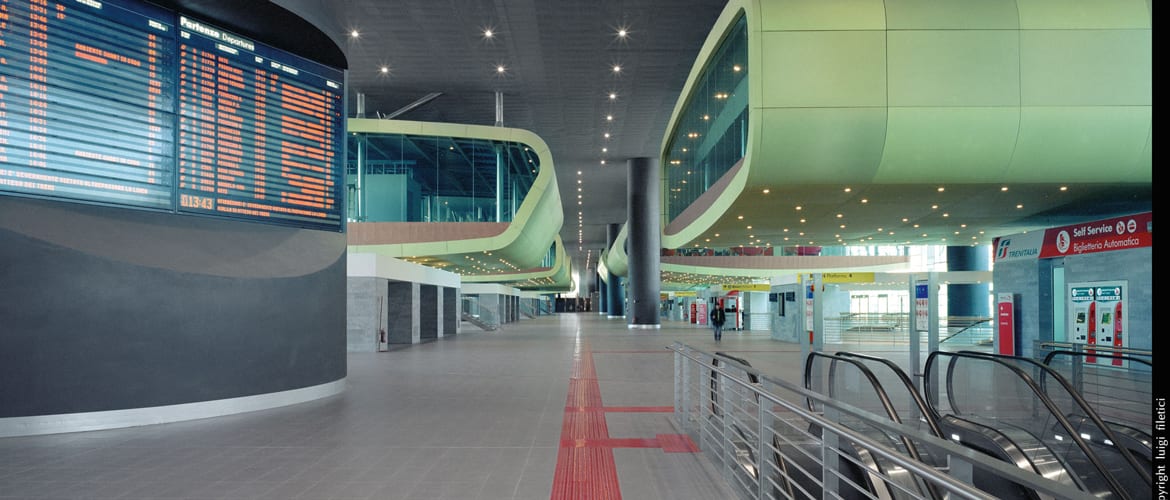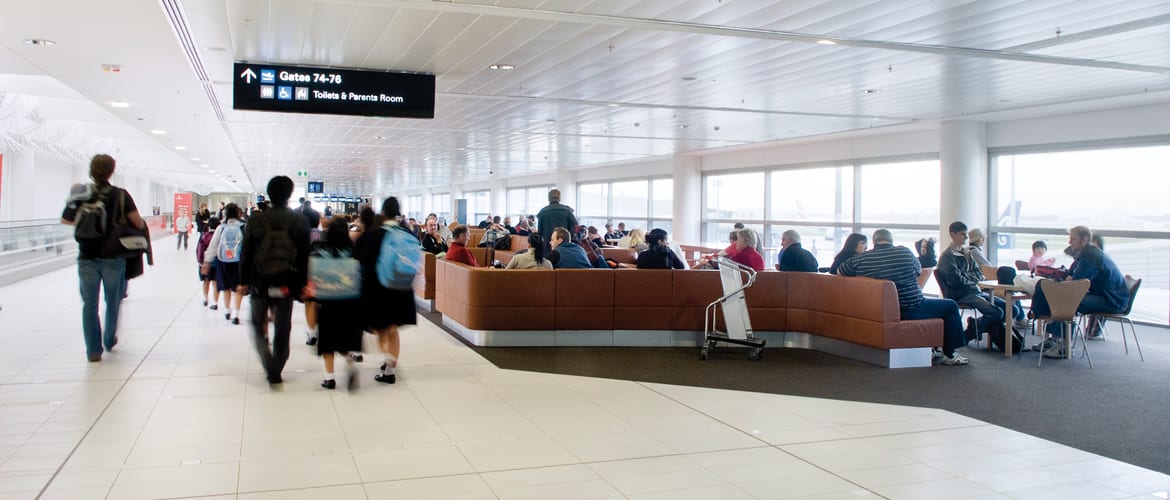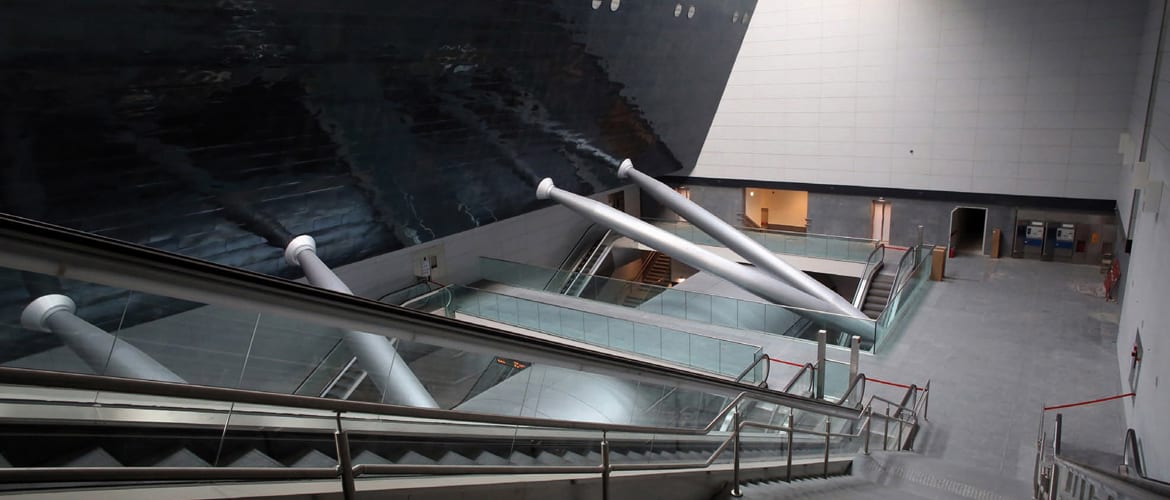Projects

Ceramic tiles at the centre of transport networks | by Karina Kharebova
One of the defining characteristics of today’s globalised world is the potential for almost unrestricted travel, which in turn is fuelling a proliferation of temporary transit spaces such as airports and railway and metro stations. Places like this, where people do not live but only pass through occasionally, are devoid of contextual or historical links and are consequently referred to as “non-places” by researchers. To counter this idea of a “non-place”, architects and designers attempt to give these spaces unique characteristics that combine functionality with a distinctive style. Amongst the various tools and methods available to professionals to achieve this aim, one of the most important is the choice of surface covering materials.
The surfaces chosen for transit spaces must meet specific technical and aesthetic requirements. The material must be suitable for all stages of construction and use, it must meet safety criteria and it must have excellent anti-slip characteristics. At the same time, it should be aesthetically appealing and must not clash with the other chosen surfaces or design solutions. One outstanding material that satisfies all these requirements is ceramic tile, normally porcelain stoneware, as can be seen if we take a closer look at its properties.

The advantages of ceramic tile and its suitability as a surface covering material in transport facilities are evident as early as the execution phase of a project. Airports and railway stations occupy very large areas and construction can be a lengthy process. The availability of large-format tile significantly reduces labour and shortens installation times. Another aesthetic benefit of large size tiles is the fact that they have a much smaller number of joints than smaller tiles, conveying the idea of a monolithic, compact surface and enhancing the sense of space.
One factor that all transit spaces have in common is the high intensity of passenger flows, which makes it essential to choose an extremely durable material like ceramic with its outstanding resistance to constant loads and wear. Due to the unique pressing and firing processes adopted during production, porcelain stoneware has very low levels of porosity and superior mechanical properties compared to natural stone, including excellent impact resistance. Both types of materials have outstanding resistance to foot traffic and to the severe effects of cleaning equipment and luggage, while ceramic is also able to withstand vibrations, an ever-present phenomenon in all transport structures.

The high concentration of people transiting through airports, railway and metro stations and other transport facilities also means that constant cleanliness is essential. Indoor waiting areas are regularly exposed to a variety of contaminants, whether dirt brought in from outside or coffee spilled in one of the ever-present food outlets. Here too, ceramic tiles offer obvious advantages. They do not absorb dirt, they are easy to clean and they maintain their original appearance even after the use of powerful cleaning agents.
Airports and railway stations also tend to have long and often complex networks of corridors and walkways, so signage is needed to help passengers find their way to airport boarding gates or train platforms. Thanks to the wide range of ceramic solutions available, floor and wall tiles can help guide passenger flows and facilitate orientation thanks to the use of coloured accents and route markings.
Ceramic tiles can also play an important role in creating an accessible and inclusive environment for passengers with special needs, now a major priority in transit spaces the world over. The widespread use of tactile surface coverings or Braille signage tiles allows visually impaired or blind people to travel safely and to clearly identify the boundaries between pedestrian and vehicular areas. And the use of tiles in contrasting colours for the general tiling of rooms allows visually impaired people to get a better idea of the size of spaces and to feel more comfortable in them.

Ceramic tiles also play an important decorative function in urban transit spaces, particularly metro stations where they have been used as a decorative material ever since their origins. Indeed, some types of tiles were first developed as cladding material in stations in Europe and the United States. These brightly coloured, beautifully crafted glazed tiles were much admired by passengers and in their various forms began to make their way into private spaces where their practical and aesthetic qualities made them popular for interior design applications.
Due to the wide range of styles available, there are no creative limits to designing surfaces with tiles. And because transit spaces inevitably involve a certain amount of waiting, an original and visually-striking decoration can help create a pleasant environment for passengers as they while away the time. Exploiting the material’s infinite variety of colours, shapes and sizes, railway stations around the world have adopted tiled panels displaying visually-appealing images or entire stories inspired by important historic events, national legends or heroes, or even everyday themes intended to lift passengers’ spirits during the journey. The outstanding visual effects achieved through skilful use of tiles means that while transport facilities are first and foremost functional spaces, they can acquire new status and become popular tourist attractions in their own right.
See other examples of ceramic tiling in Transport facilities in the Project Gallery.
August 2020




